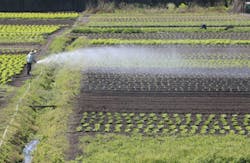Residues of commonly used drugs in the environment are likely to have a significant impact on plant growth, a new study suggests.
U.K. researchers found that the growth of edible crops can be affected by traces of non-steroidal anti-inflammatory drugs, even at very low concentrations.
Scientists at the University of Exeter Medical School and Plymouth University tested the effects of several commonly prescribed drugs, including diclofenac and ibuprofen, on lettuce and radish plants. They assessed various factors, including water content, root and shoot length, overall size and how effectively the plants photosynthesized.
According to a report by the University of Exeter, each drug was shown to affect the plants in very specific ways and there were marked differences between drugs that are closely related.
Other studies have provided evidence of the effects that pharmaceutical traces can have on the development of animals and antibiotic resistance in bacteria. But their ability to affect plant growth is poorly understood.
This is an important issue because waste treatment systems are unable to completely remove certain compounds from sewage. As a result, drugs for human use are ending up in soil through a number of routes, including the use of sewage sludge as fertilizer and reclaimed wastewater for irrigation. This could potentially lead to accumulation of pharmaceutical contaminants in soil systems.
"As populations age and generic medicines become readily available, pharmaceutical use will rise dramatically and it's essential we take steps towards limiting environmental contamination," commented Dr Clare Redshaw, one of the scientists leading the project.
"We haven't considered the impact on human health in this study, but we need to improve our understanding quickly so that appropriate testing and controls can be put in place," Dr Redshaw added.
The findings of the study have been published in the Journal of Ecotoxicology and Environmental Safety.
